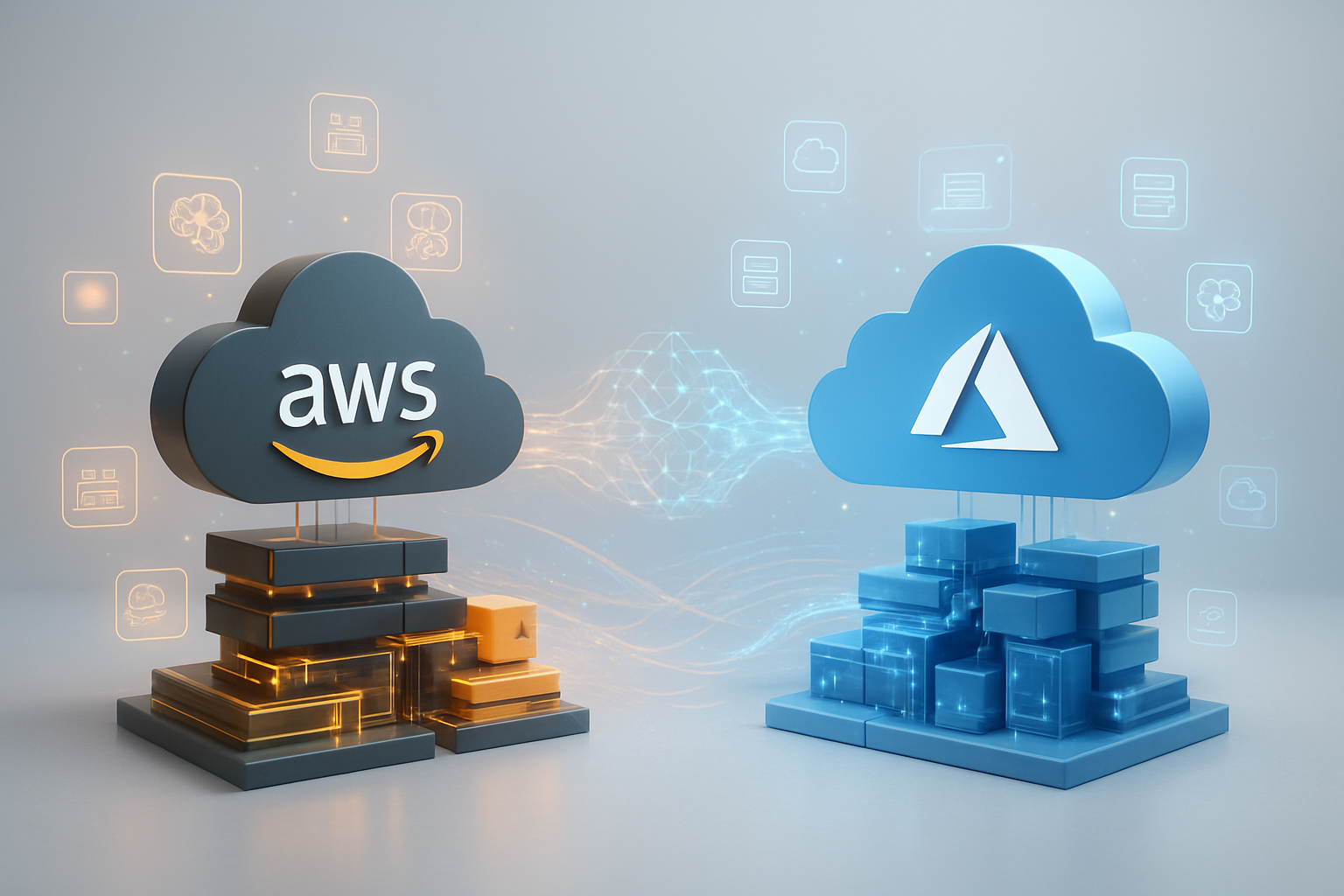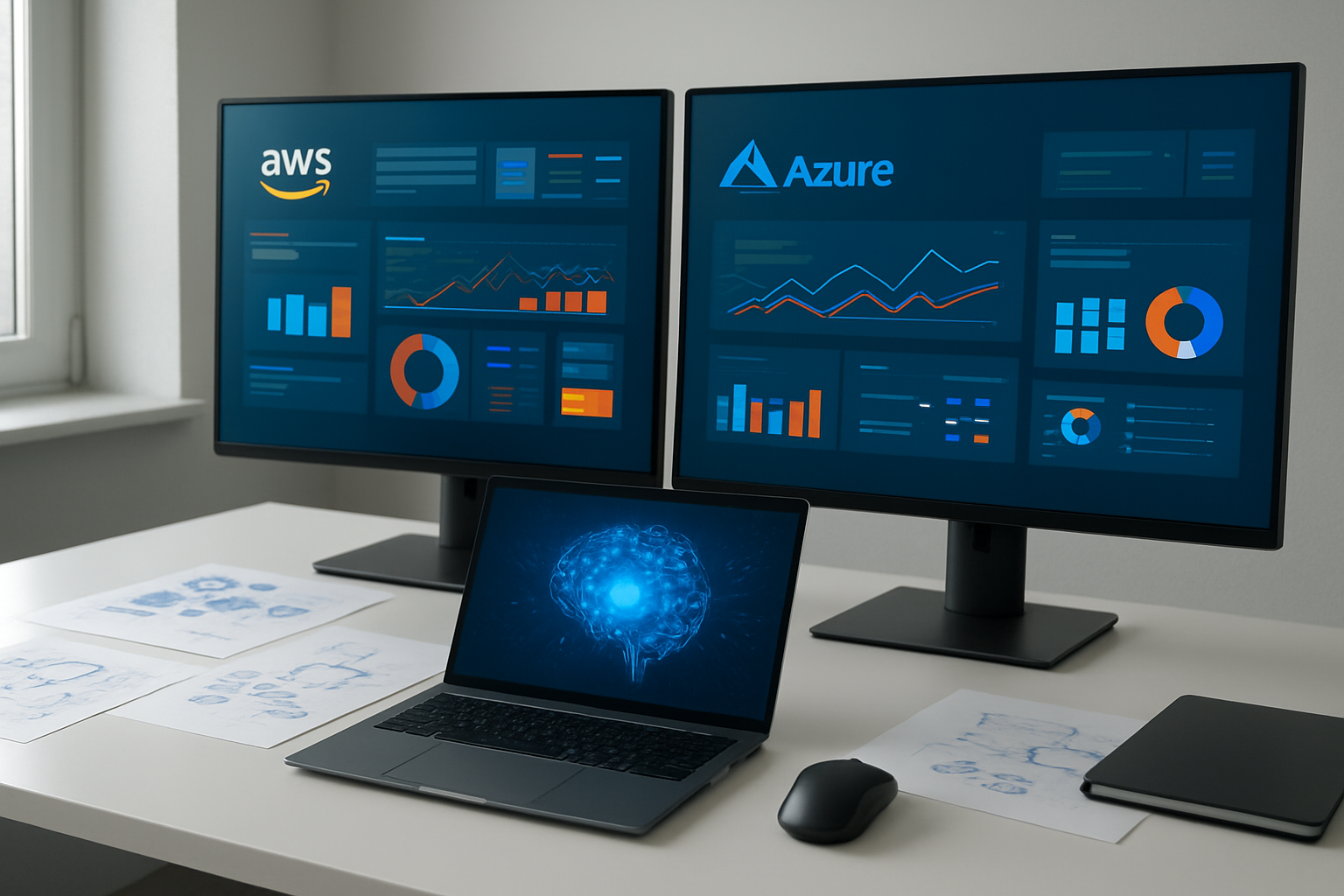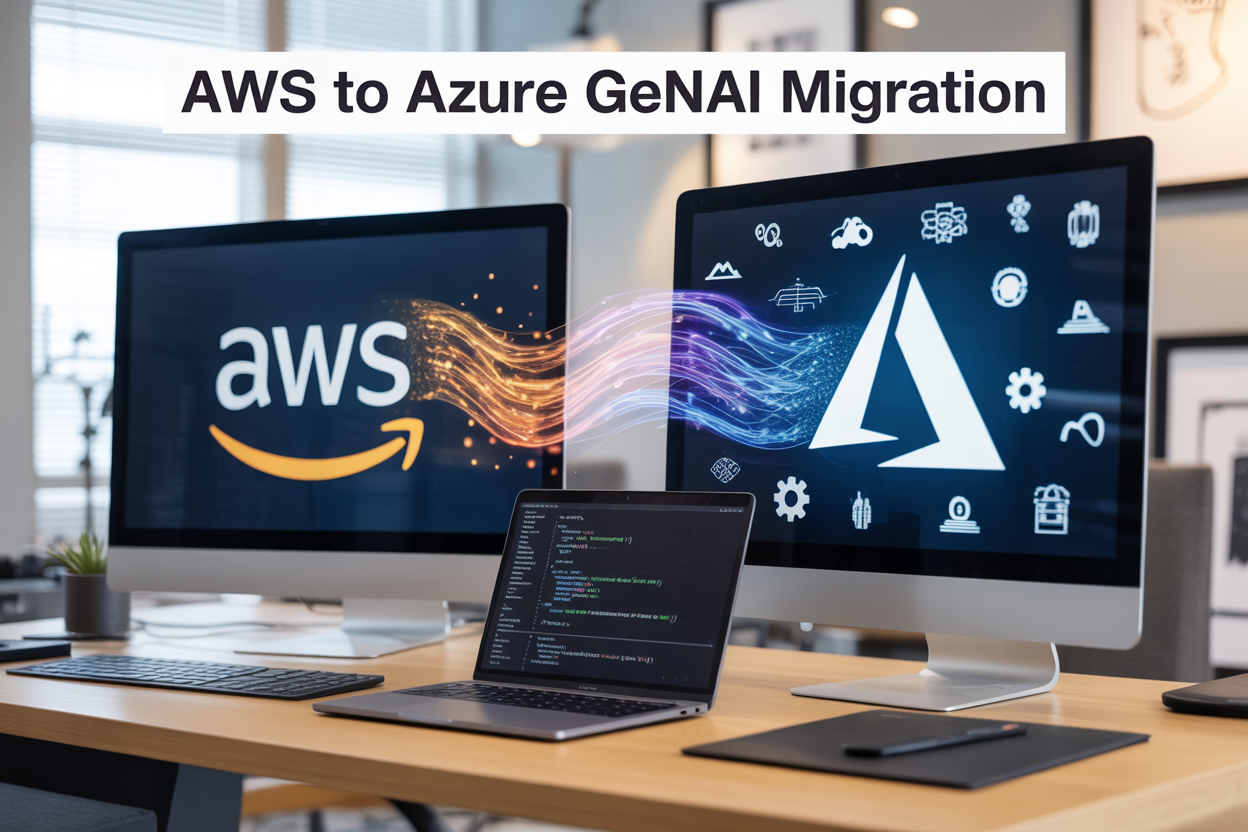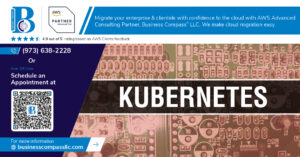Moving from AWS to Azure for AI development? You’re not alone. Many developers are exploring Azure’s GenAI services and discovering powerful tools for building custom AI agents that rival what they’ve used on AWS.
This guide is designed for AWS developers, DevOps engineers, and technical decision-makers who want to understand how Azure’s AI ecosystem compares to what they already know. You’ll get practical insights into migrating your AI workloads and building intelligent solutions on Microsoft’s platform.
We’ll walk through the key differences between AWS AI and Azure AI services, helping you map familiar AWS tools to their Azure counterparts. You’ll also learn essential Azure GenAI services like Azure OpenAI Service and Azure Cognitive Services that can accelerate your AI development.
Most importantly, we’ll cover a step-by-step migration strategy from AWS to Azure, complete with real-world examples and best practices. By the end, you’ll have the knowledge to confidently build your first custom AI agent on Azure and optimize it for production use.
Key Differences Between AWS and Azure AI Ecosystems

Service Architecture and Platform Philosophy Comparison
AWS and Azure take fundamentally different approaches to AI service design. AWS focuses on granular, purpose-built services like SageMaker for machine learning and Bedrock for foundation models, giving developers fine-grained control over each component. Azure emphasizes integration and simplicity through Azure OpenAI Service and Cognitive Services, offering pre-built AI capabilities that connect seamlessly with Microsoft’s ecosystem. This philosophical difference impacts how you’ll structure your AI applications during AWS to Azure migration. AWS developers accustomed to assembling multiple specialized services will find Azure’s more consolidated approach refreshing but may need to adjust their architectural thinking.
Pricing Models and Cost Optimization Strategies
The pricing structures between AWS and Azure AI services reveal significant differences that affect your migration budget. Azure OpenAI Service uses token-based pricing similar to AWS Bedrock, but Azure’s commitment-based pricing offers substantial discounts for predictable workloads. AWS charges separately for each AI service component, while Azure bundles related capabilities under unified pricing tiers. Azure’s hybrid benefits program provides additional cost savings when migrating from AWS, especially for organizations already using Microsoft licenses. Smart cost optimization involves leveraging Azure’s reserved capacity options and understanding how Azure’s pay-as-you-go model compares to AWS’s on-demand pricing for AI workloads.
Integration Capabilities with Existing Infrastructure
Azure’s strength lies in its native integration with Microsoft’s broader ecosystem, making it attractive for organizations heavily invested in Windows Server, Active Directory, and Office 365. AWS AI services excel at integrating with containerized applications and Linux-based infrastructure. When planning your AWS AI migration, consider how Azure’s seamless connection to Power Platform, Teams, and SharePoint can accelerate AI adoption across your organization. Azure’s hybrid cloud capabilities through Arc services enable smooth integration with on-premises systems, while AWS requires additional configuration for similar hybrid scenarios. The integration story becomes crucial when building custom AI agents that need to interact with existing business applications.
Performance Benchmarks and Scalability Options
Performance characteristics differ significantly between AWS and Azure GenAI services. Azure OpenAI Service provides consistent latency through global deployment regions, while AWS Bedrock offers lower cold-start times for sporadic workloads. Azure’s auto-scaling capabilities handle traffic spikes more predictably, making it ideal for customer-facing AI applications. AWS provides more granular control over scaling parameters, appealing to developers who need precise performance tuning. When building AI agents Azure, you’ll benefit from built-in load balancing and automatic failover features. Benchmark testing shows Azure’s managed services typically require less manual optimization compared to AWS’s more configurable but complex scaling options.
Essential Azure GenAI Services for AWS Developers

Azure OpenAI Service Setup and Configuration
Getting started with Azure OpenAI Service feels familiar for AWS developers who’ve worked with Bedrock or SageMaker. The setup process begins by creating an Azure OpenAI resource in your subscription, followed by deploying specific models like GPT-4 or GPT-3.5-turbo through the Azure portal. Unlike AWS Bedrock’s model catalog approach, Azure requires you to explicitly deploy model instances with specific capacity units. The configuration involves setting up authentication keys, defining rate limits, and configuring content filters. API integration uses REST endpoints or SDKs, making the transition smoother for developers already comfortable with cloud-based AI services. Resource management differs slightly from AWS, requiring attention to deployment regions and quota limitations.
Cognitive Services Integration for Multi-Modal AI
Azure Cognitive Services offers a comprehensive suite that rivals AWS’s AI services portfolio, providing computer vision, speech recognition, and language understanding capabilities under one umbrella. The multi-modal integration shines when combining services like Computer Vision API for image analysis, Speech Services for audio processing, and Language Understanding (LUIS) for natural language tasks. Container deployment options allow hybrid scenarios, similar to AWS AI services edge deployment. The unified billing and management experience simplifies cost tracking compared to managing separate AWS services. Key advantages include pre-built connectors for Power Platform integration and seamless authentication across all Cognitive Services endpoints. Migration from AWS Rekognition, Transcribe, or Comprehend becomes straightforward with comparable API structures and response formats.
Azure Machine Learning Studio for Custom Model Training
Azure Machine Learning Studio provides a robust platform for custom model development, comparable to AWS SageMaker but with a more visual, drag-and-drop interface. The automated ML capabilities accelerate model development cycles, while the compute instance management handles scaling automatically. For AWS developers, the biggest adjustment involves understanding Azure’s experiment tracking and model registry concepts, which differ from SageMaker’s approach. The platform supports popular frameworks like PyTorch and TensorFlow, ensuring your existing code requires minimal modifications. MLOps integration with Azure DevOps creates seamless CI/CD pipelines for model deployment. Real-time and batch inference endpoints provide flexible deployment options, while the built-in monitoring and drift detection capabilities help maintain model performance over time.
Step-by-Step Migration Strategy from AWS to Azure

Assessment Tools for Current AWS AI Workloads
AWS Migration Hub provides comprehensive discovery tools to catalog your existing AI services, including SageMaker models, Lambda functions, and data pipelines. Use AWS Config to document current resource configurations and dependencies. Azure Migrate offers assessment capabilities to evaluate your AWS AI workloads and estimate Azure resource requirements. Third-party tools like CloudEndure and Turbonomic can analyze performance metrics and cost implications for your AWS to Azure migration strategy.
Data Transfer Methods and Security Considerations
Azure Data Box and AWS DataSync enable secure bulk data transfers for large datasets stored in S3 buckets. For real-time migration, establish VPN connections between AWS VPC and Azure VNet using ExpressRoute. Encrypt all data during transit using AES-256 encryption and maintain compliance with GDPR and SOC2 requirements. Azure Storage Service Encryption automatically protects data at rest, while Azure Key Vault manages encryption keys for sensitive AI model parameters and training datasets.
Service Mapping Between AWS and Azure Equivalents
Map Amazon SageMaker to Azure Machine Learning for model training and deployment workflows. Replace AWS Comprehend with Azure Cognitive Services for natural language processing tasks. Amazon Rekognition translates directly to Azure Computer Vision for image analysis capabilities. AWS Lambda functions can migrate to Azure Functions, while Amazon Bedrock workloads transition seamlessly to Azure OpenAI Service for large language model integration and custom AI agents development.
Timeline Planning and Risk Mitigation Approaches
Plan your Azure GenAI services migration in phases over 3-6 months, starting with non-critical workloads. Create parallel environments to test Azure machine learning migration before decommissioning AWS resources. Establish rollback procedures using Azure Site Recovery and maintain dual-cloud operations during transition periods. Schedule regular checkpoint reviews every two weeks to assess progress and adjust timelines. Train your development team on Azure AI development tutorial resources to minimize deployment risks and ensure smooth knowledge transfer.
Building Your First Custom AI Agent on Azure

Agent Framework Selection and Architecture Design
Building custom AI agents on Azure requires choosing the right framework and designing a scalable architecture. Azure Bot Framework provides enterprise-grade capabilities with native integration to Azure Cognitive Services and Azure OpenAI service. For complex conversational agents, consider the Azure Bot Composer for visual design workflows, or leverage the Azure Machine Learning SDK for advanced model customization. Architecture decisions should prioritize microservices patterns using Azure Container Instances or Azure Kubernetes Service, enabling horizontal scaling and efficient resource management. Design your agent with clear separation between conversation logic, business rules, and data processing layers to ensure maintainability and future extensibility across your Azure AI development environment.
Training Data Preparation and Model Fine-Tuning
Effective data preparation drives successful AI agent performance on Azure’s platform. Start by organizing training datasets in Azure Data Lake Storage Gen2 for optimal performance with Azure Machine Learning pipelines. Use Azure Synapse Analytics for large-scale data preprocessing and feature engineering workflows. Fine-tune your models using Azure OpenAI service’s customization capabilities or Azure Machine Learning’s AutoML features for domain-specific conversations. Implement data versioning through Azure ML datasets to track model iterations and performance metrics. Consider Azure Cognitive Services Custom Neural Voice for personalized speech synthesis, and leverage Azure Form Recognizer for document processing capabilities that enhance your agent’s understanding of structured business documents.
API Integration and Webhook Configuration
Seamless API integration connects your custom AI agents to external systems and real-time data sources. Configure webhooks using Azure Functions for serverless event-driven responses, reducing infrastructure overhead while maintaining high availability. Azure API Management provides centralized gateway functionality for managing multiple service endpoints, authentication, and rate limiting. Implement Azure Service Bus for reliable message queuing between your agent and backend systems, ensuring data consistency during high-traffic periods. Use Azure Key Vault to securely store API credentials and connection strings. For real-time capabilities, integrate Azure SignalR Service to enable bidirectional communication between your agent and client applications, creating responsive user experiences across web and mobile platforms.
Testing and Quality Assurance Best Practices
Comprehensive testing ensures your Azure AI agents deliver consistent, reliable performance across different scenarios. Implement automated testing using Azure DevOps Test Plans integrated with your Azure Machine Learning workspace for continuous model validation. Use Azure Application Insights for real-time monitoring of agent performance metrics, conversation flow analytics, and error tracking. Create comprehensive test datasets covering edge cases, multi-turn conversations, and various user intents to validate your agent’s robustness. Leverage Azure Load Testing for performance benchmarking under simulated traffic conditions. Implement A/B testing frameworks using Azure Experimentation to compare different conversation flows and optimize user engagement rates while maintaining quality standards throughout your deployment lifecycle.
Deployment Automation and CI/CD Pipeline Setup
Automated deployment pipelines streamline the transition from development to production environments on Azure. Configure Azure DevOps or GitHub Actions to create robust CI/CD workflows that integrate with Azure Machine Learning for model versioning and automated testing. Use Azure Resource Manager templates or Bicep for infrastructure as code, ensuring consistent environment provisioning across development, staging, and production. Implement blue-green deployment strategies using Azure Container Instances or Azure App Service deployment slots for zero-downtime updates. Set up Azure Monitor alerts and automated rollback mechanisms to maintain service availability. Configure environment-specific configurations using Azure App Configuration service, enabling seamless parameter management across different deployment stages while maintaining security and compliance requirements.
Advanced Features and Optimization Techniques

Multi-Agent System Development and Orchestration
Azure’s multi-agent architecture enables sophisticated AI workflows through Azure OpenAI service integration and custom AI agents Azure deployment. Building orchestrated systems requires careful planning of agent communication patterns, shared memory management, and task delegation strategies. Use Azure Logic Apps for workflow coordination and Azure Service Bus for reliable message passing between agents. Implementation involves defining agent roles, establishing communication protocols, and creating fallback mechanisms for failed interactions.
Performance Monitoring and Analytics Implementation
Azure Monitor and Application Insights provide comprehensive tracking for custom AI agents Azure performance metrics. Set up custom dashboards to monitor token consumption, response times, and error rates across your AI systems. Configure alerts for unusual patterns and implement distributed tracing to identify bottlenecks. Real-time analytics help optimize agent performance and ensure consistent user experiences during AWS AI migration guide transitions.
Cost Management Tools and Resource Optimization
Azure Cost Management delivers granular visibility into GenAI service spending and resource allocation patterns. Implement budget controls, set up automated scaling policies, and leverage Azure Reserved Instances for predictable workloads. Use Azure Advisor recommendations to right-size compute resources and optimize storage configurations. Regular cost analysis helps maintain budget discipline while scaling Azure machine learning migration projects effectively across development and production environments.
Real-World Use Cases and Success Stories

Enterprise Chatbot Development Case Study
Microsoft’s own customer success teams migrated from AWS to Azure GenAI services to build an intelligent support chatbot that reduced response times by 60%. The implementation leveraged Azure OpenAI service integrated with Azure Bot Framework, processing over 10,000 customer inquiries daily. Migration from AWS Lex took just three weeks using Azure’s pre-built connectors and cognitive services, demonstrating seamless AWS to Azure migration capabilities.
Document Processing Automation Implementation
A Fortune 500 financial services company transitioned their document processing pipeline from AWS Textract to Azure’s Form Recognizer and Document Intelligence services. The custom AI agents Azure solution automated loan application processing, extracting data from unstructured documents with 95% accuracy. Azure machine learning migration reduced processing time from hours to minutes, while Azure cognitive services enhanced data validation and compliance checking across multiple document formats.
Customer Service Agent Enhancement Examples
Telecommunications giant Vodafone successfully migrated their customer service AI from AWS Comprehend to Azure’s Language Understanding service. Their enhanced customer service agents now handle complex billing inquiries, technical support requests, and service upgrades through natural language processing. The Azure AI development tutorial approach enabled rapid deployment of multilingual support capabilities, improving customer satisfaction scores by 40% while reducing operational costs through intelligent call routing and automated resolution suggestions.
Industry-Specific AI Solutions and Adaptations
Healthcare organizations have leveraged Azure GenAI services to build HIPAA-compliant AI agents for patient interaction and medical record processing. Manufacturing companies migrated predictive maintenance models from AWS SageMaker to Azure Machine Learning, creating custom AI solutions for equipment monitoring. Retail chains developed personalized shopping assistants using Azure’s conversational AI platform, while financial institutions built fraud detection systems that outperformed their previous AWS AI implementations through Azure’s advanced anomaly detection capabilities.

Making the switch from AWS to Azure for your AI projects doesn’t have to feel overwhelming. Azure’s GenAI services offer powerful tools that can match and often exceed what you’ve been using on AWS, with the added benefit of seamless integration across Microsoft’s ecosystem. The key is understanding how Azure’s approach differs from AWS, then leveraging services like Azure OpenAI Service, Cognitive Services, and Machine Learning Studio to build sophisticated AI agents that meet your specific needs.
The migration path becomes much smoother when you follow a structured approach and take advantage of Azure’s advanced optimization features. Real businesses are already seeing impressive results with custom AI agents built on Azure, proving that the platform can handle everything from simple chatbots to complex enterprise solutions. Start small with a pilot project, get comfortable with Azure’s tools, and gradually expand your AI capabilities as you discover what works best for your organization.











